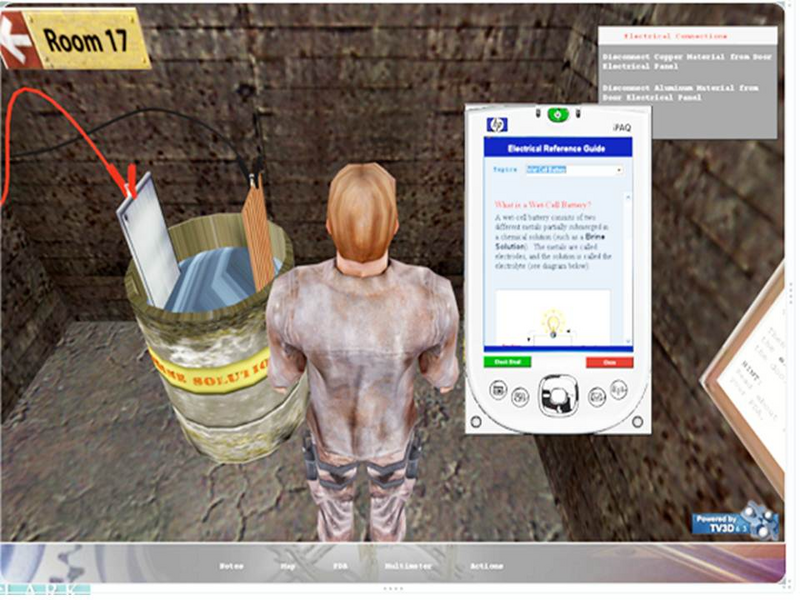ATD Blog
Why Games Don't Teach
Mon Apr 30 2012

From Angry Birds to World of Warcraft, the charismatic popularity of entertainment games is the envy of every trainer teaching information security 101 or facilitating new hire orientation. Multiple articles, webinars, and conference presentations have touted the potential of incorporating the addictive and immersive features of commercial games to create “serious games” for workforce learning. In other words games have emerged as one of trainers’ most seductive silver bullets.
What’s in a Game?
First, it is just as meaningless to generalize the learning value of games as to make claims about the learning value of graphics or other common training methods. In the two previous Evidence-Based Best Practices articles on graphics and animations, we saw that the type of graphic, the intended learning goal, and the prior knowledge of the learner must all be considered in defining the instructional value of a graphic. When you see the word "game," do you think of a game-show type of environment such as “Jeopardy,” a narrative adventure game, an arcade game, or a strategy game? Games encompass so many diverse potential learning environments that it makes no sense to make any general statements about them. We need greater precision—a more finite and specific set of game types and features—in order to match specific game environments to diverse learning outcomes.
Beware Masquerading Your Content in Game Costume
We have recent experimental evidence that narrative educational games lead to poorer learning and take longer to complete than simply displaying the lesson content in a slide presentation. Adams et al (2012) compared the learning outcomes of two carefully designed serious educational games to learning outcomes from a slide show that displayed the content embedded in the games. One game, Crystal Island, was designed to teach how pathogens cause disease. The second game, Cache 17, was designed to teach how electromechanical devices work. In Cache 17, players solve a mystery about the fate of a cache of missing paintings that disappeared during World War II by searching through an underground bunker and occasionally building an electromechanical device to open doors and vaults. Below is a screen shot from Cache 17 as well a sample of a slide from the comparison lesson.
Cache 17 screenshot
Slide version

The goal of the research was to compare learning efficiency and effectiveness from a narrative game to a slide presentation of the content. Students who played the Crystal Island game learned less and rated the lesson more difficult than students who viewed a slide presentation without any game narrative or hands on activities. Results were similar with the Cache 17 game. The authors conclude that their findings “show that the two well-designed narrative discovery games…were less effective than corresponding slideshows in promoting learning outcomes based on transfer and retention of the games’ academic content” (p. 246).
Match Game Features to Learning Outcomes
Often the features of a game are at counter-purposes to the learning objectives. For example, many games incorporate an onscreen clock requiring the learner to achieve the goal in seconds or minutes. For learning outcomes that are based on understanding and critical thinking, games with time goals that reinforce fast responses are a poor match. In contrast, for simple visual or auditory recognition tasks that benefit from drill and practice, a timed game may convert a boring flash card activity into a more engaging experience. For example, train engineers must rapidly identify the meaning of a track signal and respond appropriately. A game that displays signals and requires learners to click on the correct action (slow down, stop, etc) and scores learners based on both response accuracy and speed may prove to be an effective learning vehicle.
Before You Gamify
First, test a prototype version to evaluate effectiveness and efficiency compared with more traditional approaches.Despite the uncontested popularity of commercial games and a lot of hype in the training community, the reality is that there is scarce credible evidence on how and when to best use games to improve instructional outcomes and motivation. At this stage, I recommend games to implement drill and practice exercises for tasks that require immediate and accurate responses. Hopefully we will cultivate a more refined approach to categorize the features of games that best match various instructional goals, similar to the Bloom’s Taxonomy of learning objectives. If you are determined to gamify, I recommend testing a prototype version to evaluate its effectiveness and efficiency compared to a more traditional approach.
Please comment on your experiences with games in your instructional environment.
For More Information
Adams, D.M., Mayer, R.E., MacNamara, A., Koenig, A., and Wainess, R. (2012). Narrative games for learning: Testing the discovery and narrative hypotheses. Journal of Educational Psychology, 104, 235-249.
Clark, R.C. and Mayer, R.E. (2011). E-Learning and the Science of Instruction—3rd Edition. San Francisco: Pfeiffer. See Chapter 16: Simulations and Game in e-Learning
Young, M.F., Slota, S., Cutter, A.B., Jalette, G., Mullin, G., Lai, B., Simeoni, Z., Tran, M., and Yukhymenko, M. (2012). Our princess is in another castle: A review of trends in serious gaming for education. Review of Educational Research, 82, 61-89.
You've Reached ATD Member-only Content
Become an ATD member to continue
Already a member?Sign In
